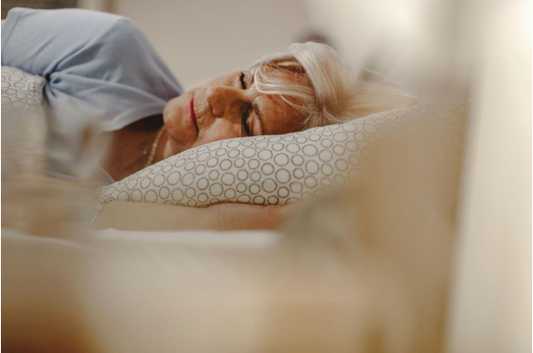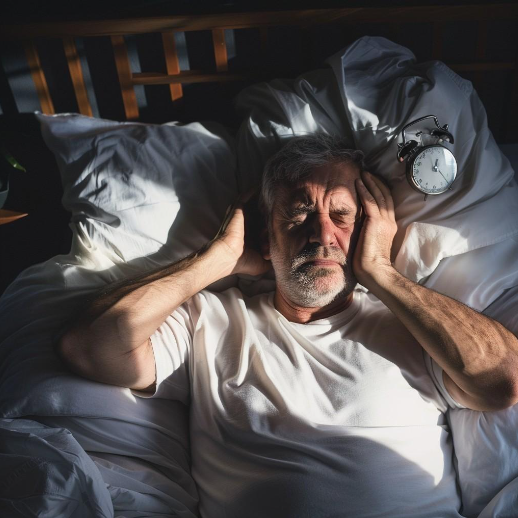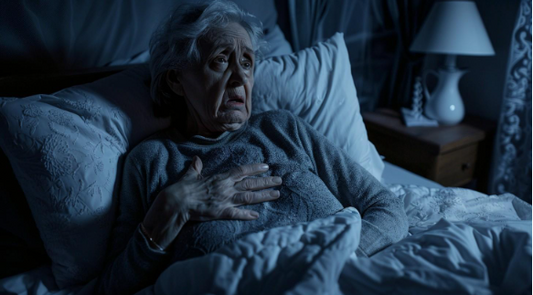Upwards of 50 million Americans are reported to have sleep disorders of some kind. However, it’s not only the severity of symptoms that can vary from one patient to the next.
The term sleep disorder covers a wide range of conditions that ultimately lead to poor sleep and significant consequences for both physical and mental health. If you suffer from sleep disorder symptoms, you must gain a clear diagnosis. Still, it’s wise to familiarize yourself with how sleep disorders are categorized.
Here are 10 sleep disorders you need to know:
#1. Insomnia
Insomnia is characterized by an inability to gain a good night’s rest and is the most common sleep disorder by far. Most people experience short-term acute insomnia at some stage, perhaps due to jet lag or going through a stressful situation. However, chronic fatigue is considered a far more problematic issue that is defined as one that lasts for at least one month.
The symptoms include not getting to sleep and waking up throughout the night. The repercussions include napping in the day, a lack of concentration, and anxiety.
Insomnia can be caused by stress, mental health issues, alcohol consumption, medications, and your sleeping environment. Treatments for insomnia include Cognitive Behavioral Therapy, medications, and sleeping aids.
#2. Sleep Apnea
Sleep apnea is a condition where you wake up suddenly due to breathing problems. It can be defined as obstructive sleep apnea, which is when the airway is blocked due to relaxed throat muscles, or central sleep apnea in which the brain signals forget to tell your body to breathe. A third type, known as complex sleep apnea, is a combination of the two.
Over 22 million Americans suffer from sleep apnea. Abrupt awakenings could be due to nightmares and other issues but are probably linked to sleep apnea if you also have sweats. Other symptoms include morning headaches, loud snoring, a sore throat in the morning, and high blood pressure.
Treatments often revolve around lifestyle changes, especially for obstructive sleep apnea that can be overcome by losing weight for example. A range of therapies and/or prescription medications may also be used.
#3. Restless Legs Syndrome (RLS)
Another common sleep disorder is RLS. It is when you cannot control the involuntary movements that your legs make while you are trying to sleep. In turn, it can become virtually impossible to get to sleep. Even when you do, kicking movements can make you wake up.
The main symptom is an involuntary kicking of the legs. However, RLS sufferers will note that it becomes more frequent in the evening, particularly when they are at rest. A physical sensation of relief will be felt after making the movements. Conversely, a conscious effort to keep still will feel almost impossible.
RLs can be hereditary, due to pregnancy, or caused by iron deficiency or kidney failure. The most common treatments are medications to relax muscles or increase the dopamine levels in your brain.
#4. Narcolepsy
Most people have a basic understanding of narcolepsy. It is an uncontrollable urge to fall asleep during the day. Aside from falling asleep, individuals may feel excessively drowsy. While we are all prone to needing a nap from time to time, narcoleptic individuals experience this regularly.
The chronic condition can also cause hallucinations, sleep paralysis, and changes in REM movement. The cause of narcolepsy is unknown, although it usually begins to show between the ages of 10 and 30. While there is a small link due to genetics, it is very rare for the condition to be passed on.
Many people find that finding a sleep pattern to align with their sleep chronotype is a good starting point. The best treatment is to focus on managing the symptoms. This can be achieved through a range of medications including stimulants and tricyclic antidepressants.
#5. REM Sleep Behavior Disorder
REM sleep behavior disorder can be very difficult for partners and family members. It is defined as acting out your dreams. This could mean moving your limbs, talking, shouting, or making abrupt movements while sleeping. It can cause personal injuries to the individual or their loved ones and is caused by the fact that their muscles are not paralyzed during sleep.
The cause is usually attributed to the nerve pathways between the brain and muscles. The condition is also linked to Parkinson’s disease, narcolepsy, and dementia with Lewy bodies. As such, older citizens are at an increased risk.
While medications can be used to help achieve muscle paralysis during sleep, many people prefer the alternative route of injury prevention instead of symptom management. Padded flooring, walls, and an uncluttered bedroom are some of the best solutions.
#6. Sleepwalking
Sleepwalking shares some attributes with REM sleep behavior disorders because the body moves while sleeping. However, sleepwalking impacts over 3.5% of the population. It is a condition that’s also known as somnambulism and is more prominent in children than adults.
It is rarely considered to be dangerous to the person, although waking a person who is in the middle of an episode is ill-advised. Crucially, precautions should be taken to prevent injuries such as trips and falls. Furthermore, it’s important to stop the person from driving the car or completing dangerous tasks.
Loved ones can spot a sleepwalker by a glazed expression and incoherent speech during an episode. Sufferers may also experience night terrors and feel exhausted during the daytime due to poor sleeping habits. Therapy, counseling, hypnosis, and medications have all been used to treat the issue. Alternatively, overcoming any underlying conditions can work wonders.
#7. Sleep Paralysis
Sleep paralysis is a condition that’s characterized by being caught between being awake and asleep. You feel conscious but unable to move or speak as if you are not in control of your body. It can last for several minutes and usually occurs either as you try to sleep or once you have awoken from sleep.
It is suggested that up to 40% of people experience it at some stage, although a far smaller percentage experience it on a regular basis. It can be attributed to a lack of sleep, stress, leg cramps, side effects to medications, and mental health conditions. It is also more likely to occur in people who sleep on their backs.
The successful treatment of underlying health conditions is the most effective solution. This could relate to conditions like narcolepsy or mental health conditions that are not exclusively linked to sleep habits.
#8. Circadian Rhythm Disorder
Circadian Rhythm Disorder (CRD) is a term that covers a range of conditions that relate to the internal body clock and its biological processes. In this case, sleeping. Non-24-hour sleep-wake disorder is a subset of this that typically impacts blind people.
It results in poor quality and quantity of sleep. As such, it can lead to staying asleep, feeling unrefreshed even after a full night’s sleep, or waking up and being unable to get back to sleep. Headaches, stomach aches, and impaired performance are all very common symptoms too.
The causes include health conditions such as mental health disorders, Parkinson’s, and menopause. Shift work, changing time zones, and medications can also play a role. Lifestyle changes can reverse the situation while bright light therapy and chronotherapy may be used.
#9. Periodic Limb Movement Disorder
PLMD is a condition that many people confuse with restless leg syndrome. However, rather than happening while you are awake, it is a condition that occurs when you are asleep. As such, many people also draw links to sleepwalking.
Periodic Limb Movement Disorder is believed to be experienced by 80% of RLS sufferers, although the number of RLS patients with PLMD is far smaller. It can be caused by diabetes, spinal cord injuries, amenia, medications, and other sleep disorders like sleep apnea and narcolepsy. The movements are usually from the ankle and knee, lasting for 2 seconds and happening every 30 seconds or so.
Medications are the most common treatment. Benzodiazepines, dopamine prescription drugs, and anticonvulsant agents are the most common choices. Lifestyle changes that encourage a relaxed evening routine can help.
#10. Bedwetting
Millions of children suffer from bedwetting, but it is also a condition that impacts roughly 1 in 50 adults too. Also known as nocturnal enuresis, it is essentially the inability to control your bladder while sleeping.
Bedwetting is often an unharmful condition, although it can be embarrassing for adults. The cause may be linked to a urinary tract infection, enlarged prostate, stress, small bladder size, or neurological disorders. A wide range of issues including diabetes and ADD can contribute to the risk factor.
Temporary bedwetting caused by UTIs and stress can be treated by handling those underlying issues. Even with a chronic condition, this is one of the most effective solutions. Limiting drinks consumption in the evening is useful too. A lifestyle routine that tackles the issue is vital.
If you have symptoms of any sleep disorder, take our sleep test today for a customized sleep improvement plan.





